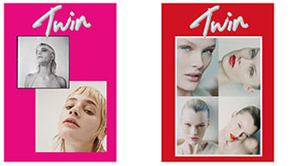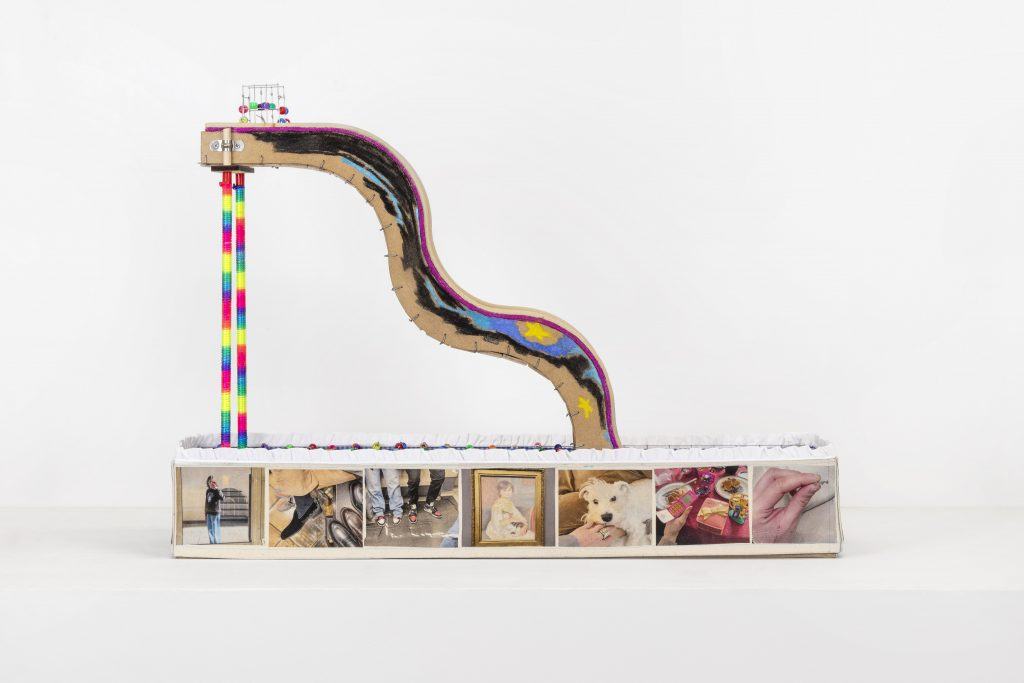
Twin correspondent and artist Cecilie Norgaard travelled to Milan to explore the emergent section of miart fair this April. London-based gallery Ginny on Frederick presented five sculptures on a high table by artist Guendalina Cerruti. They resembled miniature rides in a fun park and urban landmarks forming the skyline of a city. All the objects, clearly handcrafted, are made from a mix of wood, plastic beads, wire steel mesh, glitters, glue, fabric, and none of their dimensions exceed 70 centimetres. They seem direct extension of toys, underlining associations to childhood with their rainbow and soft pastel colour scheme. The bigger pieces are decorated by photographs from what seems like someone’s photo roll.
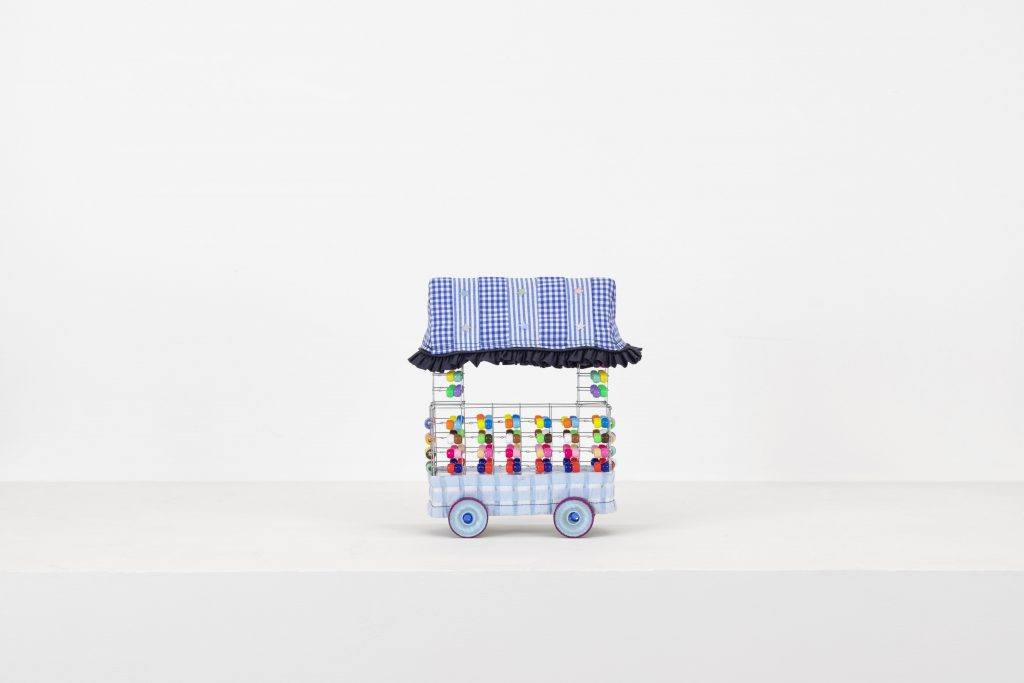
I have a thing for miniatures. The part of me that pressed a fascinated face against the glass montre of a large miniature landscape, through which different electric trains drove upon the toss of a small coin in the central station of my childhood lives on. Many childish miniature passions have matured into adult dedication and dexterity and become complicated, nerdy, professional hobbies – from Warhammer to collections of electronic and self-assembled miniature vehicles, to the elaborate design of the landscapes that these objects inhabit. Art too, I would argue, is “refined” childhood passion matured in a subject over time. The minimum criterion for good art, I would propose, is when the subject, the artist, opens their eyes to their surroundings to the extent of finding resonance outside themselves with whatever their passion is – and creates from there.

The reason why I find Cerruti’s sculptures brilliant in the context of the fair is because they’re very effective mirrors of a contemporary condition. By literally thematising entertainment and spectacle, one can perceive the works as a metaphor for the art fair as fun park: hysterical and sensation-driven, too sweet, too loud, too exciting, way too exhausting. I really like how meticulously they’re crafted. To me this communicates authenticity and intimacy which makes the sweet mockery they engage translate as sympathetic and self-aware, rather than sarcastic and condescending. These objects are someone’s darlings. The care they hold, combined with the alludes to innocence, contrasts the cynicism of the market within which they’re traded. They’re aware that they quite concretely depict entertainment value and old fashioned stimuli, like ice cream and rollercoasters. They are the entertainment around which all the hysterical transactionality happens.
As I inquire the gallerist about the work he goes on to demonstrate how it can be interacted with; he spins the work ‘Life is a Giant Wheel’ and multi-coloured beads slide up and down the spokes as they used to on the rear wheel of my bicycle. It is clear that the interactive part of the work is sensitive. “It has already been sold, so we shouldn’t spin it too much,” he says. In the context of the fair, the works function as good mirrors of the holy Trinity inner-child-professionalist-Artist, fun-fair-ride-promoter-conductor-Gallerist, and of the Consumer, for whom the spin is reserved.
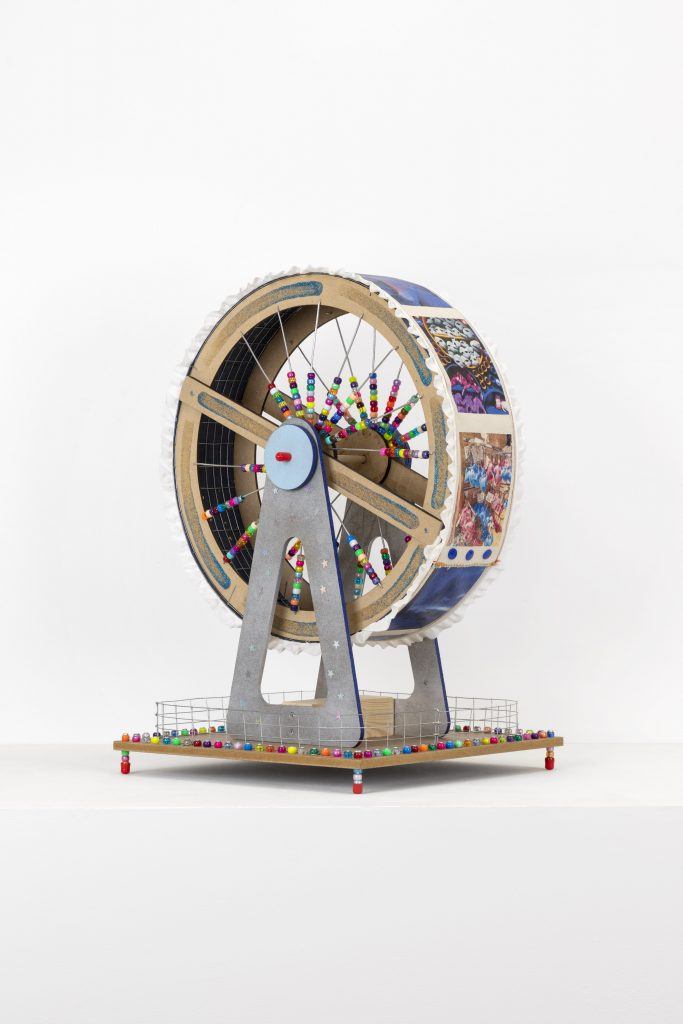
Text: Cecilie Norgaard

 PREVIOUS
PREVIOUS
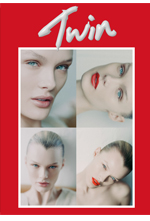
 Twitter
Twitter
 Tumblr
Tumblr
 YouTube
YouTube
 Facebook
Facebook
 Instagram
Instagram
